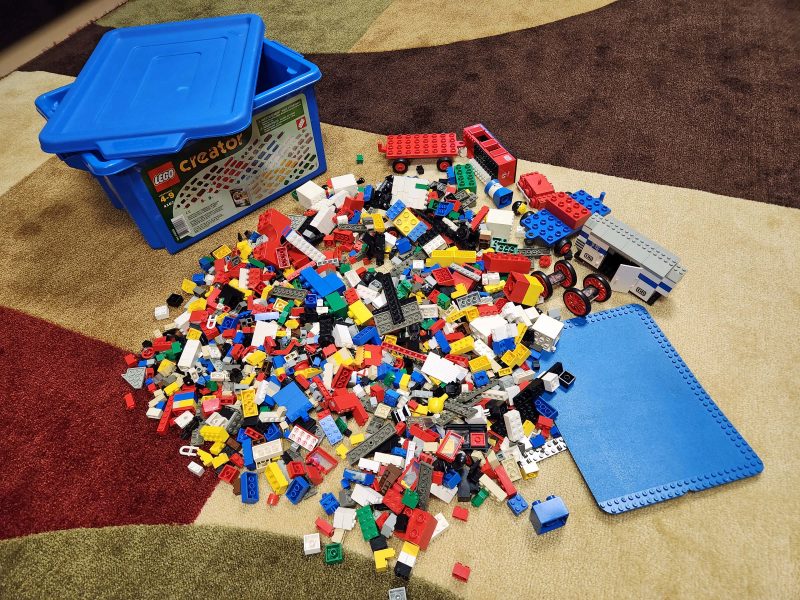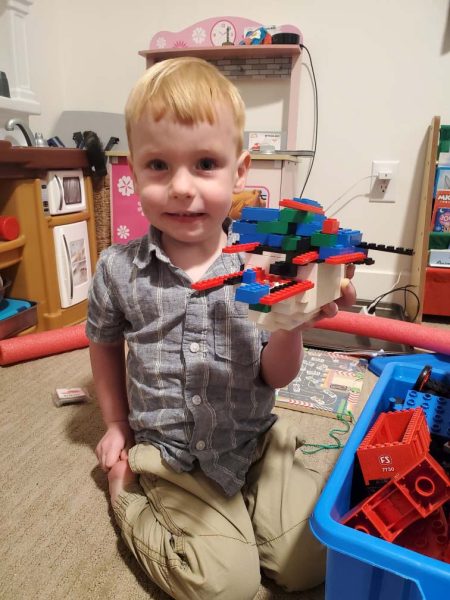When our two sons were little, they loved playing with Lego. In fact, Thom still does. Among other things, he builds Lego flowers and mini-figures and he and I still exchange a Christmas Lego set every year.
Lego has changed over the years. When our sons were little, Lego came in a variety of individual pieces–red, white, black, blue and yellow bricks in a variety of sizes. Now, it’s hard (impossible?) to find simple Lego pieces like that unless you order them online (order the exact number of pieces you want of each type/color) or have a nearby Lego store that sells pieces in bulk. Everything else is a set of Lego that builds an individual item or a small community of related items. Following directions has become more important than imagination.
We still had a box of Lego pieces in our basement. It’s bits and pieces of lots of things, but there are quite a few pieces. Ted and I have kept the Lego because our grandchildren always liked playing with it. One year, we bought a Lego box to store the pieces. When Jeff mentioned that our great-grandson, Ollie, loves Lego and that he (Jeff) was trying to think of some kind of Lego Ollie would like, Ted and I told him we could send our entire box of Lego to Ollie as our gift for his fourth birthday–after all, some of that Lego was originally Jeff’s (Ollie’s grandpa), making it what would now be called “heritage” Lego for Ollie.

That turned out to be a great idea. A four-year-old can swish piles of Lego pieces around with his hands, pick out what he likes, and stick some pieces together.
After Ollie’s birthday, Alex (his dad) texted the photo below to me. He said Ollie thanks us for the Lego and wants us to see the boat-plane he built. Lego. The perfect gift, filled with imagination.

Author’s note: Lego will probably never die. It’s plastic, so it won’t decompose and, even if you step on it, there’s more pain inflicted on your foot than on the Lego piece.